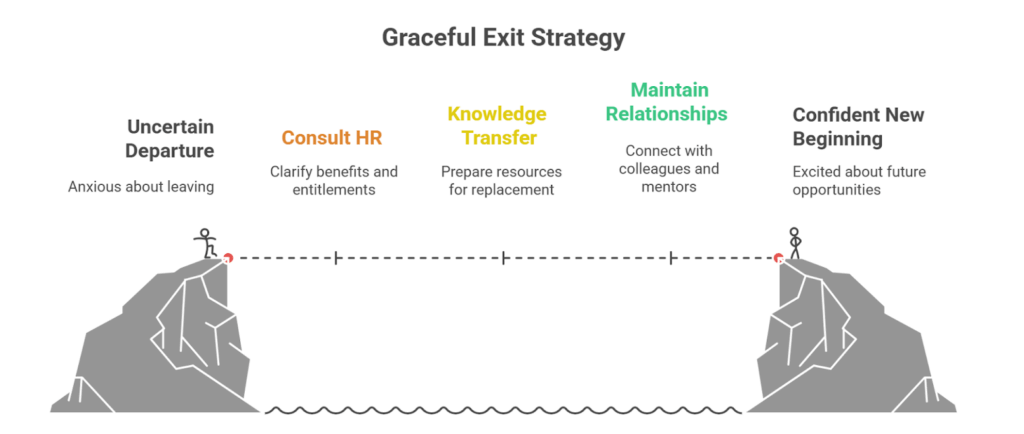

Career Pivot: 7 Steps to Leave the Corporate World Smoothly
The urge to leave corporate isn’t panic—it’s information. With a thoughtful plan, you can turn that signal into a confident, meaningful next move.

The urge to leave corporate isn’t panic—it’s information. With a thoughtful plan, you can turn that signal into a confident, meaningful next move.
What You’ll Learn in This Blog
This guide walks you through the essential steps for leaving corporate life with clarity, confidence, and strategy. By the end, you’ll know how to:
Years in a structured system lead to predictability but not necessarily fulfilment.
That being said, leaving the corporate world is no small decision. You may crave more freedom, alignment with your passions, or a healthier work-life balance.
In fact, a survey reveals that one-third (33%) of respondents have considered quitting or already quit their jobs in the last six months, and this number is increasing as more professionals seek meaning beyond corporate life.
Yet, making a corporate career transition comes with its unique challenges, even more so if the transition happens in midlife. Financial responsibilities, identity tied to your job title, and fear of the unknown often hold people back.
But what you need to reinvent yourself successfully is the right roadmap.
Start by asking yourself: “What do I truly want from life outside corporate?”
A career pivot is definitely not something to rush into or to be based on a split-second decision.
If you’re looking for a clear structure and framework, or pivot career coaching programs like FuturePivot™ can help accelerate your planning and keep you on track with personalized 1:1 coaching.

The biggest barrier to leaving corporate life is often the uncertainty with regard to financial stability.
Having financial clarity makes the transition much more empowered and a lot less overwhelming.
Before making the move, ensure to:

Transitioning doesn’t always mean quitting abruptly.
Before you call it quits, begin by experimenting:

You don’t have to do this alone.
Surround yourself with people who inspire your transition.
This blend of community and skill-building makes pivots sustainable.
To gain the tools, confidence, and community to make your next career move stick, join a small-group Strategic Networking Workshop.

A successful career transition isn’t just about strategy—it’s about how you think. If your identity is tied too closely to a job title, any change can feel like a loss instead of an opportunity.
Most importantly, shifting your perspective from “I’m changing jobs” to “I’m reinventing myself” transforms the experience.

One of the smartest ways to pivot is to prepare while you still have a paycheck.
This minimizes financial pressure and validates your next move before going all-in.

Much like businesses want to save their reputation on Google Maps with reviews, you also need to protect your reputation with a thoughtful exit strategy.

Leaving corporate life in midlife isn’t about abandoning security—it’s about creating a career that finally matches your values and vision. With intentional planning, financial preparation, skill-building, and the right mindset, you can move confidently into a future of reinvention.
If you’re ready to accelerate your journey, explore structured guidance courses designed for professionals today!
They help make bold transitions and seek accountability along your journey out of the corporate world.
A career pivot is a deliberate shift into a new role or industry that better aligns with your goals and values. Rather than starting over, it builds on your existing skills and experience to create a more fulfilling professional path.
Not at all! Many professionals reinvent themselves in their 40s, 50s, and even 60s. Experience is a strength. In fact, employers and clients often value your maturity, reliability, and perspective. These are all the advantages the younger professionals may lack.
Ask about healthcare benefits, retirement contributions, severance, and outplacement support.
Executive reinvention coaching is a guided process designed to help you pivot with confidence. This coaching helps you clarify your goals, strengthen the skills you already have, and map out a clear, actionable plan for a smooth transition.
Provide adequate notice, document handovers, and leave on good terms. A positive exit sets you up for future success.


